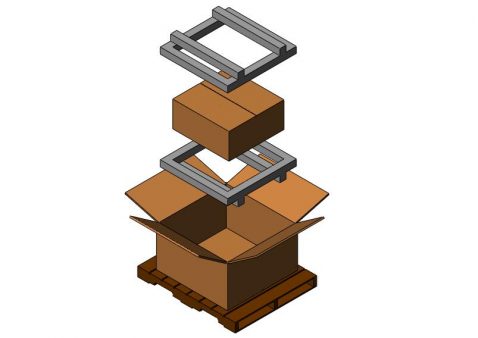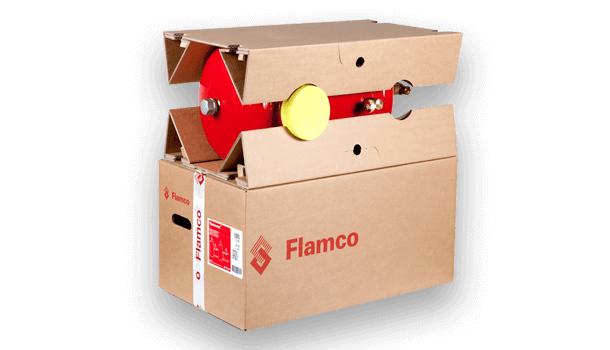Ingenious Industrial Packaging Solutions: Elevating Your Products
Wiki Article
Effective Industrial Recycling Solutions for Sustainable Product Packaging: A Comprehensive Overview
In today's increasingly environmentally-conscious globe, the demand for lasting product packaging services has actually never been greater. To meet this demand, services throughout industries are proactively seeking reliable commercial recycling options. Nevertheless, navigating the facility landscape of lasting product packaging can be challenging without a comprehensive overview. That's where this thorough overview on efficient industrial recycling solutions for lasting product packaging is available in. By exploring crucial areas such as product packaging product choice, making for recyclability, implementing recycling facilities, teaming up with reusing partners, and monitoring and determining reusing success, this guide will outfit you with the understanding and devices needed to make educated decisions and drive favorable change within your organization. Whether you're a product packaging specialist, sustainability supervisor, or merely interested in the topic, this overview will give valuable insights and techniques to help you browse the globe of lasting product packaging.Packaging Material Selection
The choice of product packaging products plays an important function in ensuring the sustainability of industrial recycling options. When it concerns sustainable packaging, the option of materials is type in minimizing environmental impact and taking full advantage of reusing efficiency. Choosing the best products can help in reducing waste generation, conserve sources, and promote a circular economic climate.One crucial element to consider in product packaging product choice is recyclability - industrial metal packaging. Products that can be conveniently reused and included back into the production cycle are chosen. Products like cardboard, paper, glass, and specific types of plastics can be recycled numerous times without losing their quality. On the various other hand, products that are tough to reuse, such as non-recyclable composites or mixed plastics, can produce difficulties for the reusing process and might end up in burners or garbage dumps.
Another consideration is the usage of naturally degradable and eco-friendly materials. Packaging made from sustainable sources, such as plant-based plastics or biopolymers, can help in reducing reliance on nonrenewable fuel sources and reduce environment adjustment. In addition, eco-friendly materials damage down normally over time, reducing the build-up of waste in garbage dumps.
In addition, the weight and volume of product packaging materials ought to be reduced to minimize transport costs and energy usage. Light-weight materials not only need fewer sources throughout production but also contribute to decrease carbon emissions during transportation.
Designing for Recyclability
Packaging designers need to focus on the use of products that are widely approved for reusing and have developed recycling infrastructures. Products such as glass, light weight aluminum, and certain kinds of plastic, like Pet dog and HDPE, are generally recycled and should be preferred over materials that are pricey or challenging to recycle.An additional critical consideration in making for recyclability is the elimination of unnecessary elements or materials. By minimizing the number of layers, coatings, and added components, product packaging can be made simpler and much easier to recycle. In addition, designers must aim to lower the use of combined products, as they can complicate the recycling procedure.

Implementing Recycling Facilities
Effective implementation of recycling facilities is essential for the success of industrial reusing options. Without appropriate framework in position, the recycling process ends up being inadequate and inefficient, impeding the overall goal of lasting packaging.To execute reusing facilities efficiently, a number of key aspects need to be considered. To start with, there should be an efficient collection system that helps with the splitting up and collection of recyclable products. This can include assigned recycling containers in public areas, in addition to partnerships with waste administration business for curbside pickup and sorting.
Once collected, the recyclable materials require to be transported to reusing centers in a timely fashion. This requires reliable logistics and transportation networks, ensuring that the materials reach the proper facilities immediately.
At the recycling centers, progressed sorting and processing innovations ought to be in area to divide different kinds of materials properly. This consists of the usage of automated arranging machines, optical scanners, and hands-on sorting strategies.
Furthermore, there ought to be a durable market demand for recycled materials. This can be achieved via cooperations with producers and markets that utilize recycled materials in their production processes. Creating a secure market for recycled materials incentivizes the recycling market and advertises the round economic situation.
Collaborating With Recycling Allies

One secret facet of working together with recycling partners is the facility of clear communication networks. It is essential to establish open lines of communication to assist in the exchange of info, updates, and responses. This enables both celebrations to remain educated concerning the development of recycling campaigns and deal with any difficulties or issues that might occur.
Additionally, collaboration can entail joint initiatives in making and implementing reusing programs. Recycling partners can supply useful insights and support in creating effective collection systems and figuring out the most ideal recycling innovations. By working together, organizations and reusing partners can enhance the recycling procedure and reduce waste.
Moreover, collaboration can extend past the operational facets of recycling. It can likewise include advocacy and education and my blog learning initiatives. By signing up with forces, services and recycling companions can raise recognition concerning the value of reusing and promote the fostering of lasting packaging practices amongst customers and other stakeholders.
Monitoring and Measuring Recycling Success
To make sure the effectiveness of commercial reusing services and the success of sustainable product packaging goals, it is critical for companies and their recycling partners to develop a comprehensive system for tracking and measuring reusing success (bulk container recycling). Tracking and measuring recycling success allows organizations to assess the effect of their recycling initiatives, helpful hints identify locations for renovation, and set meaningful targets for future developmentOne method to track recycling success is through making use of information collection and evaluation tools. By accumulating information on the quantity of product packaging waste generated, the percent of waste that is recycled, and the kinds of materials being recycled, companies can acquire useful understandings right into their reusing efficiency. This data can then be evaluated to determine patterns, patterns, and areas of inefficiency.
Another essential aspect of tracking and gauging reusing success is developing standard and clear metrics. This enables companies to contrast their efficiency versus market benchmarks and track their progress gradually. Metrics such as reusing prices, waste diversion prices, and greenhouse gas emissions can offer a measurable action of a business's reusing success.

Conclusion
To conclude, executing effective commercial recycling remedies for lasting product packaging needs careful factor to consider of packaging product selection, designing for recyclability, applying recycling infrastructure, working together with reusing companions, and monitoring and gauging recycling success. By integrating these methods, organizations can add to a much more environmentally-friendly and sustainable approach to packaging, decreasing waste and promoting the circular economy.By checking out key areas such as packaging material option, developing for recyclability, implementing recycling facilities, collaborating with recycling companions, and monitoring and measuring recycling success, this overview will certainly equip you with the understanding and devices needed to make informed decisions and drive favorable change within your company. Packaging developers need to focus on the use of materials that are widely accepted for reusing and have actually developed reusing facilities.Cooperation with reusing partners is necessary for the effective application of commercial reusing solutions and the accomplishment of lasting packaging objectives. By signing up with pressures, businesses and recycling partners can raise awareness about the relevance of reusing and advertise the fostering of lasting product packaging techniques amongst customers and other stakeholders.
By gathering information on the quantity of product packaging waste produced, the percentage of waste that is recycled, and the types of materials being reused, companies can acquire beneficial understandings into their reusing performance.
Report this wiki page